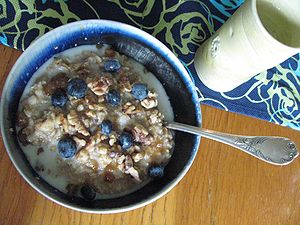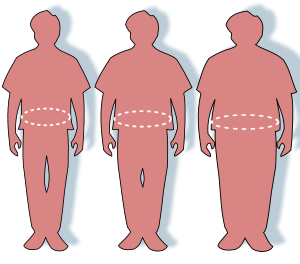 Image via Wikipedia
Image via WikipediaHere is another very informative article that I am going to share with you. Some may find this an uninteresting topic because this talks only about the lowly salt.
This article reminds me about a story told by a Sunday School teacher long ago about a King who had three beautiful daughters. The youngest being beautiful and intelligent is well-loved by the father. One day, the father held a feast and he would want his daughters to be present in the banquet. Then the King called for his eldest daughter and asked her how he loved his father. The daughter left and when she came back, she brought with her plenty of gold. His daughter told him that she priced her father so much as gold. The father was so delighted.
Then it was the turn of the second daughter to be asked and she brought with her silver to represent her love to his father.
Then came the youngest daughter bringing with her only salt. The father was so furious about his daughter and sent her away.
An idea came to the youngest daughter. She requested the cooks to serve all the food on the table without salt in it. When the king tasted the food, he gravely complaint with its taste. Then he realized how much his daughter loved him.
I was thinking that we may need this article because we have been using salt as seasoning to our recipes to be cooked. This may warn us to some of the dangers in taking and using too much salt in our meals.
Here's the article:
Salt is either a colorless or white crystalline solid used as seasoning and preservative.
Have you ever thought of cheese, cereals, bread, meat, pudding, pancakes, soups, tuna fish, sardines, corned beef, and tomato juice as salt foods? Probably not, yet they are heavily laced with salt and additives, such as a sodium nitrates, sodium phosphates, sodium ascorbate, monosodium glutamate, and even sodium sacharines as well as other sources of sodium including leavening agent, baking powder, and baking soda.
Foods that don't taste salty can actually contain high amounts of sodium-milk, mayonnaise, and baby food preparation-to mention a few. Dr. Jean Meyer, Tuft University president, points out that infants on bottle milk formula are already consuming generous amount of salt.
Mother's milk, by itself, contains about 7 mg. of salt per liter, while processed cow's milk contains more than 25 mg. of salt per liter.
The amount of salt needed to sustain a life is 220 mg. a day, equivalent to one-tenth of a teaspoon. Without this small amount, experts claim one could feel weak and nauseous. An entirely saltless life will make you wither and finally die.
Most people, however, take about 6-10 times more salt-more than the required amount. The result? Kidney disease, high blood pressure, and unexplained itches and allergies or body rashes.
The kidneys maintain the normal level of sodium in the body. If there is too much sodium, the kidneys excrete it. Conversely, when the body needs sodium, the kidneys maintain it, then pump the substance back into the blood. But when the kidneys fail to excrete enough sodium, the retained sodium holds water, raising the volume of blood. When a lot of blood passes through the arteries and veins, it exerts pressure on their walls. The blood pressure then increases, making the heart work harder to pump increased volume of blood. Subsequently, the heart rate rises.
Sodium also increases the amount of water in and around body tissues, resulting in swelling or fluid overload which can cause congestive heart failure. Overindulging in salt can also worsen hemorrhoids and divulge the veins in the anus and elsewhere.
Taking too much salt is not advisable for people suffering from headaches and those having premenstrual syndrome.
Here are some ways to reduce salt intake in your diet.
1. Place salt shaker on table.
2. Use only half of what is called for.
3. Experiment with condiments, herbs, spices, and other seasonings but not bouillon cubes since they contain lots of sodium.
4. Reduce your dependence on processed food.
5. If you have high blood pressure, check with your doctor before taking antacids, cough preparations, laxatives, and vitamin C.
6. Drink plenty of water.
Let us educate our taste buds by opting to eat fresh fruits and vegetables. When cooking vegetables, add less salt as possible for health reasons.













